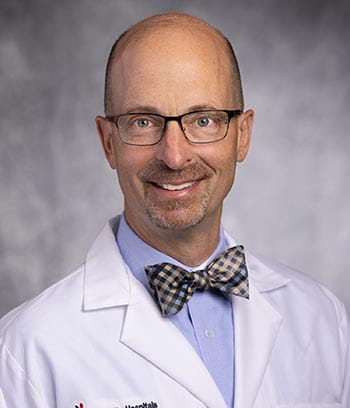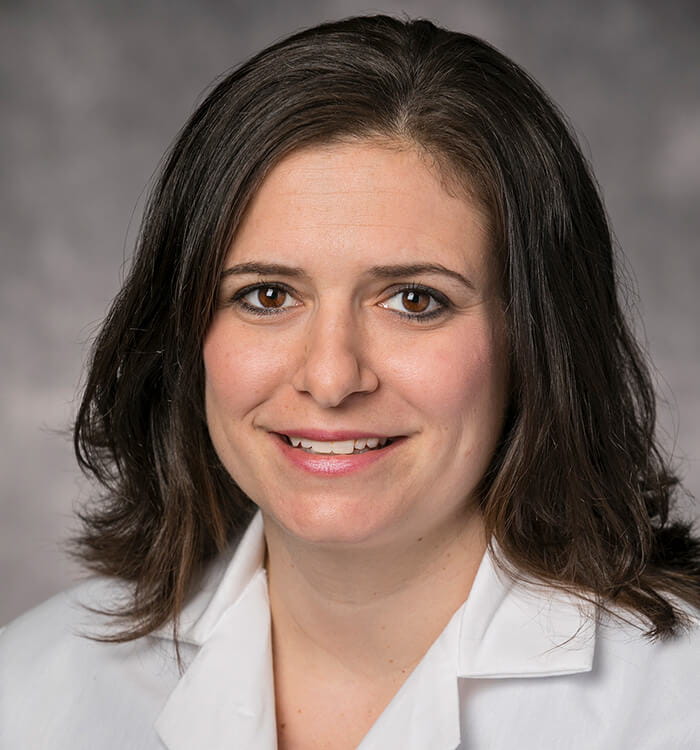Improving the Transition from Medical School to OB/GYN Residency
July 20, 2025
Innovations in Obstetrics & Gynecology | Summer 2025
The process of choosing a medical residency program is anxiety-provoking, time consuming and potentially costly for resident applicants. Simultaneously, sorting through applicants and selecting the right students is equally difficult for program directors.
 Eric Strand, MD
Eric Strand, MD Amy Armstrong, MD
Amy Armstrong, MDFortunately, the transition from undergraduate medical education (UME) to graduate medical education (GME) is changing in the OB/GYN specialty area.
Eric Strand, MD, Vice Chair of Community Partnerships for the Department of OB/GYN at University Hospitals, participates in a nationwide effort to improve this cumbersome process under a grant funded by the American Medical Association called Transforming UME to GME Transition: Right Resident, Right Program, Ready Day One. Dr. Strand leads the subgroup that developed standards for the application and interview process.
“This grant was focused on two primary objectives,” Dr. Strand says. “The first was to streamline the process: How do students apply to residency programs? How are applications reviewed by program directors? How do we best match residents with programs? Not every program is a perfect match for every applicant. We wanted to make better matches and reduce anxiety in the process.”
The second objective was to create a national curriculum to integrate students into OB/GYN residency programs and help ensure they have the basic skills to be successful, including medical knowledge and time management strategies. The grant team is also piloting coaching programs to provide group mentoring for new interns.
From Development to Implementation
As the Residency Program Director for Obstetrics and Gynecology at University Hospitals Cleveland Medical Center, Amy Armstrong, MD, receives 600 to 700 applications annually for six available resident slots.
“I’ve been the program director here for three years,” says Dr. Armstrong, who is Division Chief of Gynecological Oncology at University Hospitals Cleveland Medical Center. “When I started, the recruitment process was daunting. During the pandemic, most OB/GYN programs transitioned to a virtual interview process. This expanded the number of programs students could apply to, eliminating the potential barrier of travel costs for in-person interviews. The grant helped program directors as well by narrowing the pool of applicants and identifying students most likely to be a good fit for our program. Getting guidance and support from the grant team was amazing.”
Here are some of the program’s highlights:
Standardizing the application and interview process. Previously, each OB/GYN residency program released interview invitations at unpredictable dates and times. It was challenging for students to juggle applications to multiple programs and to wonder if, or when, they would receive invitations to interview. Now, all programs adhere to a standard invitation date. Students can plan for — and respond to — interview invitations all in one day. “We also implemented a standardized Letter of Evaluation to replace one letter of recommendation and created the Alignment Check Index to help weigh applicants’ characteristics to better match them to a program's mission and values” Dr. Strand says.
Signaling. By allowing applicants to notify (signal) specific programs that they are uniquely interested in, program directors like Dr. Armstrong can prioritize their recruitment efforts. “This has been very helpful,” Dr. Armstrong says. “If 150 students out of 700 signal UH, we can focus on those students for further evaluation. We can take a deep dive into what it is about each of them that might make them a really good match for UH’s OB/GYN residency program. If a student hasn’t signaled us, we know we’re not that high on their list.”
Improved online platform. The OB/GYN specialty has adopted a new online platform, ResidencyCAS, a centralized application service that offers significantly more functionality. “ResidencyCAS allows students to apply to programs and program directors to sift through applications,” Dr. Strand says. “We can leverage the computer’s significant sorting capabilities to seek applicants with particular characteristics.”
Ready, Day One. The transition efforts don’t stop once a student and a program are matched. “We have a curriculum to help integrate new interns and set them up for success,” Dr. Armstrong says. “The program includes teaching residents how to accept and embrace feedback; how to focus on their own wellness and practice gratitude; how to implement best practices for their individual learning styles; and we help them develop their own personal mission statement and values. These modules are a valuable part of helping adults transition from medical student to medical resident.”
UH Embraces Innovation
“Over the past five years, the OB/GYN specialty area has been on the forefront of seeking innovative changes within the UME to GME transition, while using evidence-based changes and prioritizing learners’ needs,” Dr. Strand says. “We are continuing to make the process less anxiety ridden, less expensive and more user-friendly for both applicants and program directors. Here at UH, our team has leveraged these new tools with excellent outcomes.”
For more information about residency or the transition process, email Dr. Armstrong at Amy.Armstrong@uhhospitals.org.
Contributing Experts:
Eric Strand, MD
Vice Chair, Community Partnerships
Department of OB/GYN
University Hospitals
Professor
Case Western Reserve University School of Medicine
Division Chief, Gynecological Oncology
Residency Program Director for Obstetrics and Gynecology
University Hospitals Cleveland Medical Center
Assistant Professor
Case Western Reserve University School of Medicine


